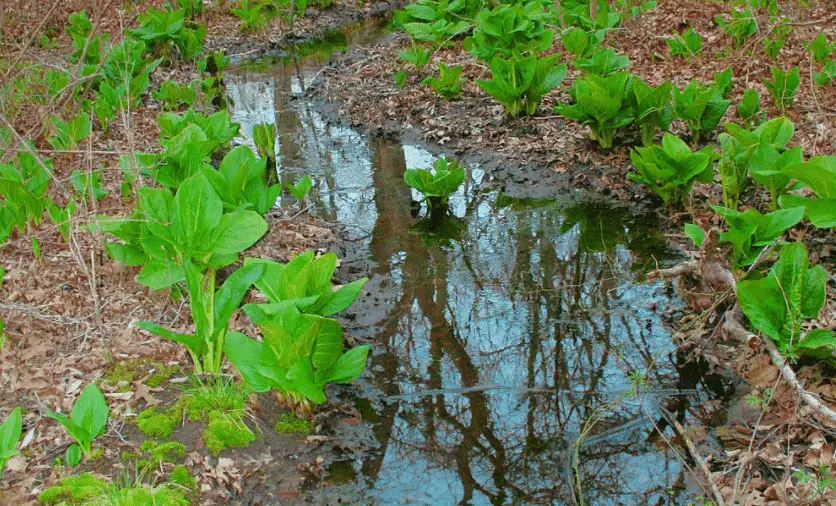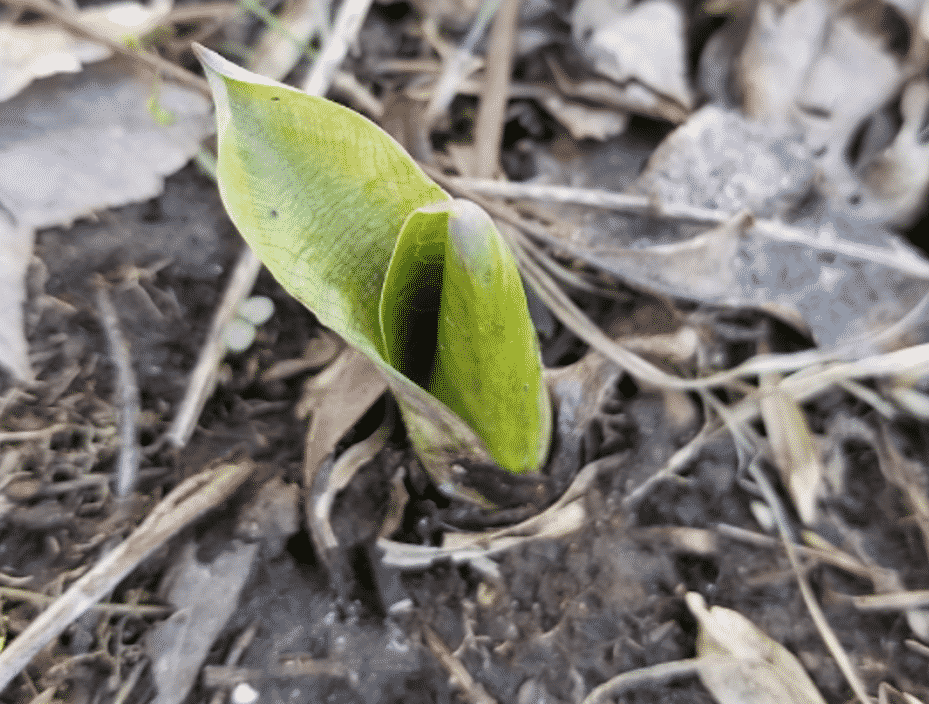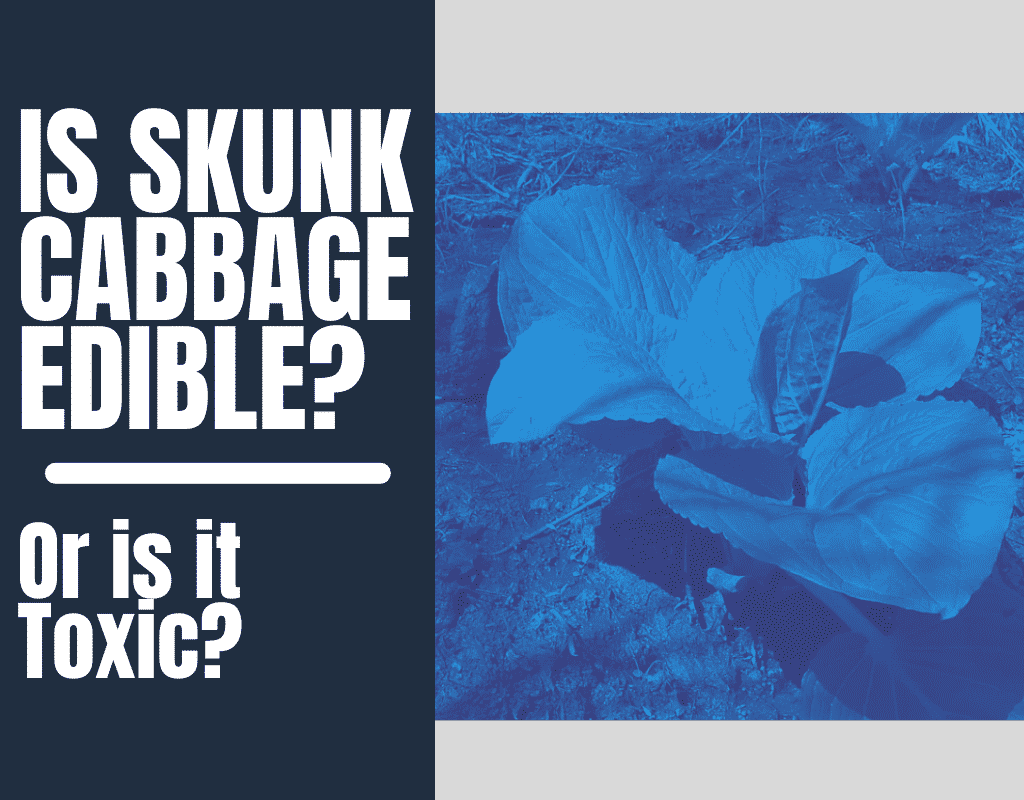You can find skunk cabbages (aka swamp cabbage) in swamps across North America, Europe, and occasionally in water gardens. The distinctive skunky smell doesn’t make it seem appetizing, but the name makes you question if it’s edible. That brings up a very important question: Can you eat skunk cabbage or is it a poisonous swamp plant that you should leave alone?
Is skunk cabbage edible? Skunk cabbage is a toxic plant so I don’t recommend eating it. A small bite of skunk cabbage can cause burning and swelling in the mouth/throat and larger doses can be fatal in humans and animals. There are ways to safely prepare and eat skunk cabbage, but it’s not worth risking the toxic side effects.
Raw skunk cabbage is poisonous, but there is a rich history of using skunk cabbage as food. Native Americans would boil the roots in soups or stews to remove the toxins during periods of starvation, and take advantage of its medicinal properties.
Europeans were also known to prepare tea out of skunk cabbage. As you may have noticed, boiling skunk cabbage can removes the toxins, but it’s not worth risking serious injury for a food with little nutritional value.
In the rest of this post I’ll explain how Native Americans prepared skunk cabbage for food/medicinal purposes and how to make it into tea. Eating skunk cabbage is extremely dangerous! So I don’t recommend testing your luck, but it’s interesting to see how it was prepared and used in the past.
Can You Eat Skunk Cabbage?

Technically, you can eat skunk cabbage by following traditional Native American cooking methods, but it’s not worth the risk. There’s a wide range of serious side effects if you don’t prepare it properly. Best case scenario is you end up with gastric irritation, nausea, and diarrhea. Worst case is you have swelling in the mouth and throat that cuts off oxygen to your body.
Skunk cabbage is considered moderately toxic to humans and animals, but it can be fatal. It contains contain crystalline shards of calcium oxalate that can cause serious health issues in the human body. I’ll go over the dangers of eating skunk cabbage and give a detailed explanation of overdose symptoms below.
With that being said there is a rich history of Native Americans gathering and preparing skunk cabbage as a starvation food. Skunk cabbage leaves are very low in calories (2 calories per stalk) so they would only cook the roots.
They would dry out the skunk cabbage roots, cut them up, and steam them with other vegetables to make stews and soups. There was very little nutritional value so it was only used in emergencies when there was no other food available. The leaves would then be used to dry out berries and make pemmican cakes (similar to beef jerky).
Skunk cabbage was also commonly used for medicinal purposes. It was used to reduce swelling of cuts, cure blood infections, relieve pain, cure fungal infections, treat sores, and made into a tea to treat coughs and respiratory infections.
Caution! Skunk Cabbage Should Never Be Eaten Raw

Raw skunk cabbage is considered moderately toxic in humans and animals. The root, leaf, and flower of skunk cabbage contain crystalline shards of calcium oxalate. Those shards irritate the mucosa lining in the mouth/throat causing swelling and burning in the mouth and throat.
Eating small doses of raw skunk cabbage probably won’t kill an adult, but large portions can be fatal! If you have curious pets or children you should try to remove skunk cabbage that pops up on your property and never plant it in water gardens. Insects love the smell and nectar of skunk cabbage so there are benefits to planting it in your garden, but you need to be careful.
Skunk cabbage should never be eaten raw, but there are ways to boil out the toxic crystal shards of calcium oxalate. Traditional Native American cooking recipes recommend boiling the roots with other vegetables and changing the water several times. Every time you change the water it filters out more of the toxic chemicals until there’s not much left.
Symptoms Of Eating Raw Skunk Cabbage
Skunk cabbage has been eaten in the past, but there’s no good reason to take the risk. Boiling it removes the toxins, but it doesn’t have any nutritional value. There’s no benefit to eating the leaves, but the roots can be broken down providing minimal calories.
There are some medicinal benefits, but it’s not worth taking the risk. Skunk cabbage overdose can cause diarrhea, gastric irritation, nausea, and swelling in the mouth/throat. Gastric problems usually aren’t fatal, but swelling of the mouth and throat can cut off your bodies oxygen supply.
Harvesting Skunk Cabbage
Native Americans would harvest the leaves of skunk cabbage in the early spring and use them as “Indian Wax Paper”. They would wrap fish and wild game in the leaves and dry them out slowly over the coals of a fire to make pemmican cakes. Berries would also be dried out to be eaten during the winter. Cooking the leaves this way doesn’t remove the toxins so they’d be discarded after processing the meat/fish.
Skunk cabbage roots are much harder to harvest and prepare. They would have to muck into the swamp and scoop the roots out of the mud using makeshift shovels. The roots would then be thoroughly washed, wiped off, and dried out in baskets.
Skunk cabbage is usually found in swamps so there’s a high likelihood of developing mold. They would have to turn the roots every day and place them in direct sunlight with good airflow. Once they were dry the roots would be cut up and cooked with other vegetables in soups/stews.
Making Skunk Cabbage Tea

Skunk cabbage tea was used as a medicine by Native Americans and Europeans. It has anti-inflammatory and anti-bacterial properties so it would be used for a wide variety of respiratory problems. The tea would be used for bronchial infections, treat coughs, and relieve seasonal asthma and allergies.
They would make tea by harvesting and drying out the root, and cutting it up into small pieces. The roots would then be steeped for in a cup of boiling water and drank multiple times per day. I’ve never tried it, but I hear that skunk cabbage tea tastes terrible and it uses mild toxins to induce an immune response so it could be dangerous.
It might have had medicinal benefits in the past, but there are far safer medical treatments available today. There’s no good reason to make skunk cabbage tea when it’s so much safer to take modern medicine.




